 |
| The Aztecs named this Avenue of the Dead, mistaking the temples for tombs. |
A lot of people mistake Teotihuacan as an Aztec site. In fact, this city was already ancient and abandoned when the Aztecs came to power. The Aztecs didn’t know who built it. They named it Teotihuacan (City of the Gods) and treated it as a sacred place. When the Spanish conquistadors arrived, Teotihuacan was one of the few native sites they didn’t plunder and destroy because it was already in ruins. However, when Catholic priests discovered natives leaving offerings at the ancient temples, they ordered all the statues of gods destroyed. Many ancient artifacts were demolished at this time, and a giant statue at the top of the Sun Pyramid was pushed over the side and broken into pieces.
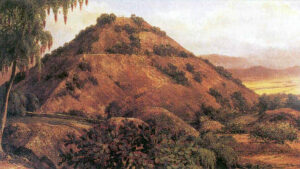 |
| A Painting of The Pyramid of the Sun, 1832 |
Teotihuacan was rediscovered in the nineteenth century, and restoration began in the early 1900’s. It was at this time that the four levels of the Sun Pyramid were accidentally divided into five by archaeologists who misjudged the dimensions of the pyramid. Fascinating historical photographs of the restoration work can be found at this site – which gives a pretty good look at the condition of the city when they began work on it.
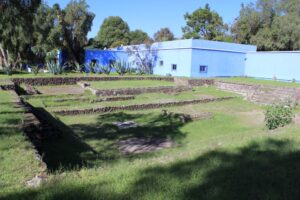 |
| City ruins on the grounds of our hotel. |
The grounds that have been restored are only the heart of Teotihuacan – the religious center of the city. The residential properties extend well beyond the site you see today, and some of them – buried beneath the neighboring towns – will probably never be excavated. Historians believe that the pyramids and surrounding temples were similar to today’s Vatican City. The pyramids were dedicated to major gods, with countless other shrines honoring smaller deities. Priests and shamans worked out of temples and stalls, selling religious icons and blessings. Visitors came to worship and make offerings for special intentions. Priests and ancient astronomers came here to study.
There was also a great deal of trade and commerce. Archaeologists have found evidence of trade between these people and other cultures, like the Mayans. It is estimated that Teotihuacan was home to some 200,000 people at a time when London was only a Roman fort.
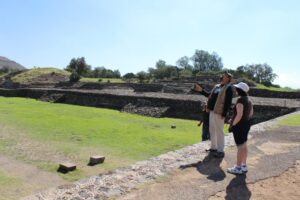 |
| Our guide, Alvaro, explains that this was once a reflecting pool. |
After about 800 years of use, Teotihuacan was abandoned. It’s hard to imagine why people would move out of a city this large, and the lack of any written record means that no one is sure of the exact reason. I have read different theories, and our tour guide shared more. The end of Teotihuacan may have been caused by internal strife and a change of government that spawned a revolution, climate change caused by deforestation and the resulting loss of top soil, or an invading force. (Of course I give a different explanation in my WIP!)
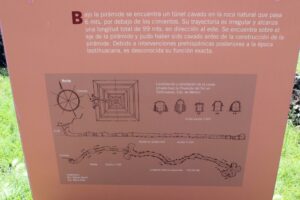 |
| Sign describing the tunnel. |
Mysteries still abound in Teotihuacan. Some of their carvings are astonishingly advanced – almost looking like stamps or molds — but evidence suggests they had no metal tools and worked only with obsidian. Archaeologists have recently discovered that a tunnel beneath the Sun Pyramid actually extends all the way to the Temple of Quetzlcoatl and that parts of the tunnel are lined with sheets of mica. Mica, which is not native to the area and must have been transported a great distance, is currently used as insulation against the heat produced by the rockets of spaceships. Add that to the fact that the three pyramids of Teotihuacan are aligned in an exact imitation of the stars in Orion’s Belt (just like the Pyramids of Giza and the Pyramids of Xi’an), and you have the makings of an episode of Ancient Aliens!
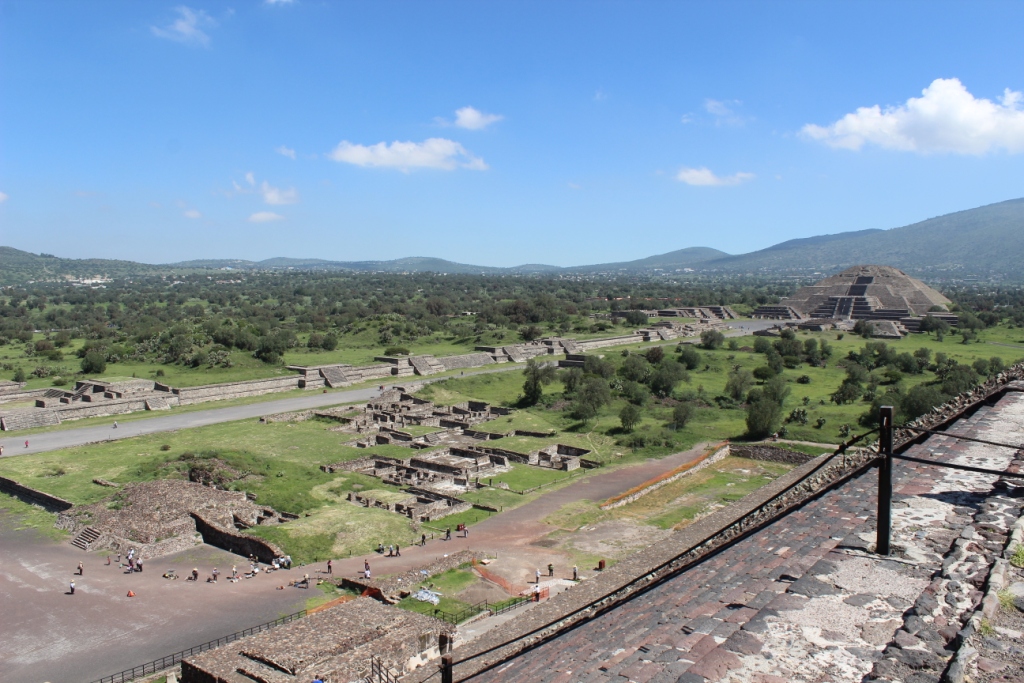
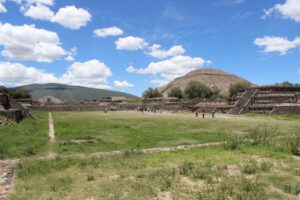
I’m intrigued–so interested to find out your explanation. This is fascinating information, Dianne!
I’m so envious of your adventures. I’ve always been interested in the ancient histories of various civilizations.
I never realized that about the mica–that is so fascinating. What a great trip!
Aliens for sure. 🙂
Now you’ve really made me want to go to Mexico and not only see the parts for the story I wrote a million years ago but also see this place. I wonder why the tunnels were lined in mica? Did your guide have an explanation? This is all quite fascinating by the way.
OMG! You’re actually blogging while you’re on holiday? While you are seeing all this amazing stuff?? Damn, wish I was there too. Sounds amazingly like a mysterious abandoned village in Ireland that I wrote about. Have a margarita for me, and a great time!
That was fascinating! Thanks for posting.
LOL. started thinking aliens as soon as you mentioned that Mica was used for spaceships.
Very cool place. I am amazed at how tuned into astronomy some of the ancient cultures were. Sure makes you wonder what was really happening when the city was designed. Thanks for a very interesting post.
Wow! Thanks for filling us in on some of the fascinating facts and history of this place. Amazing. (Can you believe you were actually THERE???? I’d still be pinching myself!)